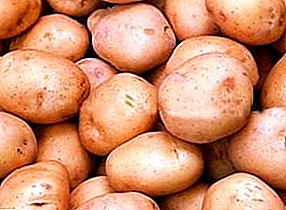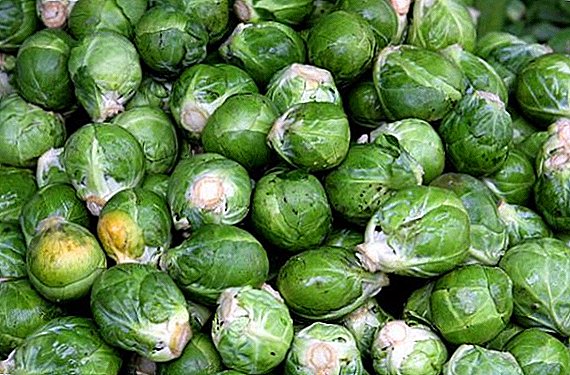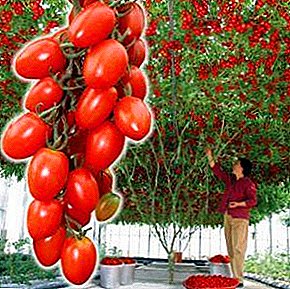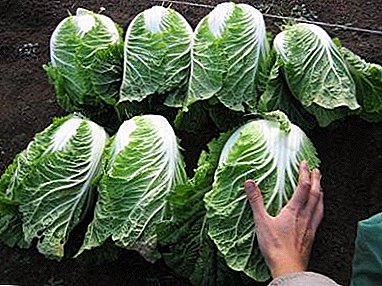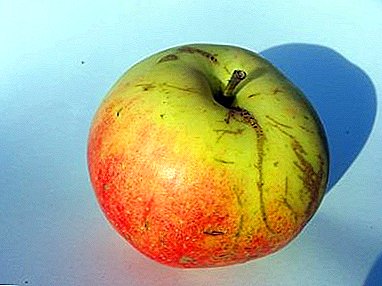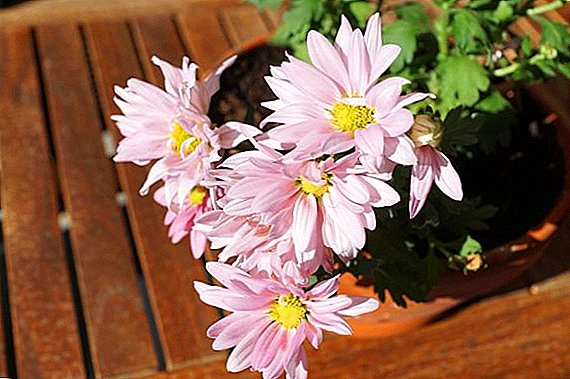
Rook Moses or Reo - This is a tropical plant. Its homeland is considered to be Central and South America, where it can be seen in a humid tropical forest, on the banks of a river, a lake or in the foothills.
In this article, you will learn how to care for a Reo room flower.
General description of the plant
First of all, growers appreciate Reo for the decorativeness of foliage, which is not only monophonic (green or purple), but also have stripes of various colors: white, pink or yellow. At the same time, its small delicate flowers in ship bracts are rather elegant and attractive.
A photo
See below: indoor plant Reo




NOTEthat the genus Reo has only one type of plant - Reo Motley.
Care after purchase
Flower Reo care at home requires special. Having bought a plant, no need to transplant it immediately. It should be placed for several weeks separately from other colors. This will help him get out of the stressful situation associated with the move, as well as provide an opportunity to detect pests, if any.
After that, Reo needs to be transplanted into a properly selected substrate, since plants in flower shops are usually found in transporting soil that does not contain any nutrients. Then he is followed by the usual care, which does not cause any special problems, since Reo is not too demanding and whimsical regarding the conditions of detention.
Lighting
Room Reo prefers bright but diffused light. In this regard, he will feel great in the eastern or western part of the room. If the plant is located on the window sill of the south window, it needs to create additional protection from the bright sun to avoid sunburn.
Important! Insufficient lighting can lead to the fact that variegated types of Reo lose their original bright color and will quickly stretch, losing all their decorative effect.
Air temperature and humidity
 In the spring and summer, the air temperature in the room where Reo is located should be maintained at from twenty to twenty two degrees. In winter, it is reduced to fifteen degrees.
In the spring and summer, the air temperature in the room where Reo is located should be maintained at from twenty to twenty two degrees. In winter, it is reduced to fifteen degrees.
At the same time you should know that draft is contraindicated for the plant, as well as a sharp change in temperature.
Since Reo belongs to tropical plants, for him important high levels of humidity.
Therefore, the Reo plant should be sprayed daily, and in the pan you can put moss or expanded clay, which should be regularly moistened.
Watering and feeding
In spring and summer, the plant requires regular abundant watering. In autumn and winter, it is watered less frequently, only as needed.
Feed Reo start from April and continue until early September. This is done twice a month and use complex mineral fertilizers.
The soil
 Reo requires light and loose soil. From ready-made substrates, you can use ready-made soil for decorative leafy plants. If the soil mixture is prepared independently, then you can take the following components:
Reo requires light and loose soil. From ready-made substrates, you can use ready-made soil for decorative leafy plants. If the soil mixture is prepared independently, then you can take the following components:
Turf ground - two parts, leaf earth - one part, peat - one part, sand - one part;
Moss-sphagnum, peat, perlite and vermiculite in equal amounts (landless mixture).
Before planting it is necessary to shed the prepared mixture with a solution of potassium permanganate or calcined in the oven for disinfection.
Transplant and pruning
In the first years of growth, Reo is transplanted every year; more mature plants are planted once every three years.
A pot for transplanting a plant should be selected a few centimeters longer and wider in diameter than the old one. At its bottom must be holes.
The flower must be removed from the container without breaking the earthen room and carefully moved to a new pot with a good drainage layer and fresh nutritious soil.
Special pruning Reo does not require, just need to carry out regular removal of dried leaves. If the plant is grown as a single, then it is necessary to cut lateral shoots in a timely manner.
Reproduction at home
Reo reproduction can be carried out by cuttings (apical and lateral shoots) and sowing seeds.
Growing from seed
Seed propagation is best carried out in the spring. To do this, prepare a container with a mixture of peat and sand. Seeds are evenly distributed over the surface of the soil, gently pressed, moistened with a spray bottle, a plastic film is pulled from above. It must be removed every day to air and moisten the landing. At observance of all requirements, shoots appear quickly enough. When three to four leaves are formed on the seedlings, you can transplant them into individual containers.
Important! Seeds are recommended to propagate only species of Reo with leaves of green color. In variegated forms, as a rule, maternal symptoms are not preserved.
Reproduction by cuttings
 For the vegetative breeding method, Reo needs to choose healthy, well-developed cuttings at the beginning of spring and carefully cut them with a clean knife.
For the vegetative breeding method, Reo needs to choose healthy, well-developed cuttings at the beginning of spring and carefully cut them with a clean knife.
The slices should be treated with activated carbon, and the base of the cuttings with growth stimulant. Each delenka is planted in a separate pot with peat and sand and placed in a bright and warm room for rooting.
You can use another way, for this, the cuttings are placed in a container with water, to which a small amount of crushed activated carbon is added so that the cuttings do not rot. Once the roots have grown to grow to four centimeters in length, you can plant shoots in separate containers.
Important! All work with Reo needs to be carried on with gloves, since getting his juice on the skin of the hands can cause severe irritation and even minor burns.
Benefit and harm
Although the chemical components of the plant have not yet been fully studied, in its homeland it is widely used by traditional healers to treat many diseases. It is used to make febrifugal, wound healing and antiseptic compounds. Broths made from flowers, leaves and roots of Reo are used to treat diseases of the stomach, colds and rheumatism.
But, despite the fact that the plant is possible and has a healing effect, you should not self-medicate without consulting a specialist. Besides Reo is poisonous, so its improper use can lead to very serious consequences.
Reo has a number of useful qualities. It helps to eliminate negative energy, aggressive atmosphere and tension in the room. The house is restored to a calm, peaceful and comfortable atmosphere, and friendly and respectful relations between the tenants. It is noticed that in people who grow this plant, the condition of the vessels improves.
Diseases and pests
 Although the indoor flower Reo is a fairly resistant plant, but if you do not follow the rules of care, it may be affected by the shield and spider mite.
Although the indoor flower Reo is a fairly resistant plant, but if you do not follow the rules of care, it may be affected by the shield and spider mite.
Detected pests need to be removed from the plant with a solution of household or green soap. After that, it is necessary to spray the purified flower with an insecticide solution.
Of the diseases for Reo, gray rot and powdery mildew are the most dangerous.which quickly develop in the conditions of an excess of moisture. In the process of treating a plant, all damaged parts are removed from it, and then full treatment with fungicides, including soils, is carried out. Treatment must begin at the first signs of the disease, otherwise the plant will not be able to save.
Possible difficulties in growing
Often beginner growers in breeding Reo are faced with a number of problems and do not know how to eliminate them. Consider the most common ones:
- The leaves of the plant are deformed and dry. due to rare watering, it can also occur when using too cold water;
- Foliage shrinks due to lack of lighting or lack of nutrients in the soil;
- With sunburn leaves are covered with yellowish spots;
- Waterlogging inhibits the growth of Reo and provokes falling leaves at the bottom of the plant
- If a the plant is drawn out and loses the brightness of the colorit means that he lacks light;
- Dry tips brown they talk about too dry air;
- Softening and sagging sheets indicates that the room temperature is too low.
If these problems arise when growing Reo, it is necessary to review the conditions of its maintenance and adjust them in accordance with all requirements.
As can be seen from the above, Reo is not very picky and picky.therefore, with minimal time and effort, you can grow a very attractive, bright plant that will give even more comfort to any room.


